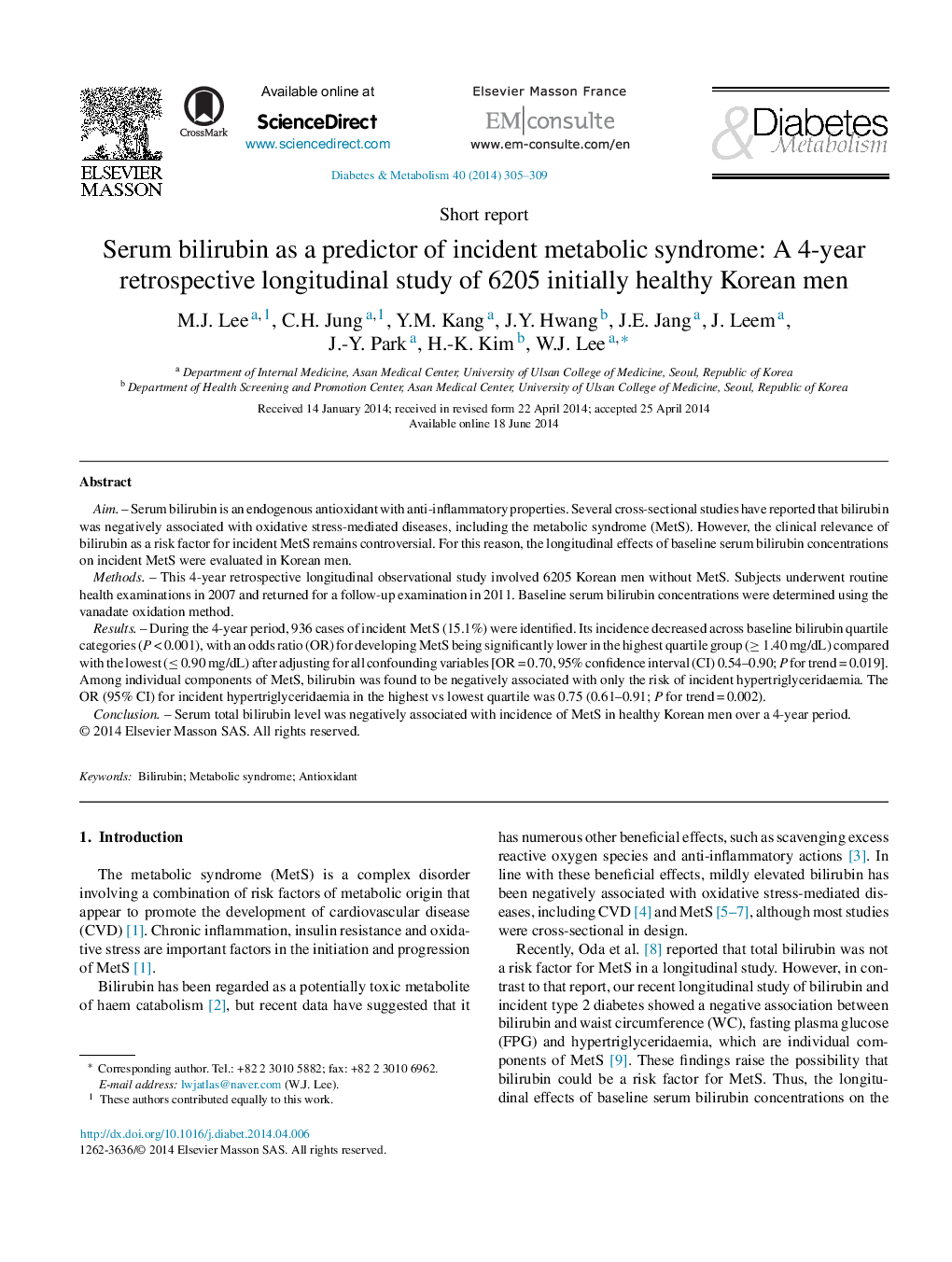| Article ID | Journal | Published Year | Pages | File Type |
|---|---|---|---|---|
| 3259369 | Diabetes & Metabolism | 2014 | 5 Pages |
AimSerum bilirubin is an endogenous antioxidant with anti-inflammatory properties. Several cross-sectional studies have reported that bilirubin was negatively associated with oxidative stress-mediated diseases, including the metabolic syndrome (MetS). However, the clinical relevance of bilirubin as a risk factor for incident MetS remains controversial. For this reason, the longitudinal effects of baseline serum bilirubin concentrations on incident MetS were evaluated in Korean men.MethodsThis 4-year retrospective longitudinal observational study involved 6205 Korean men without MetS. Subjects underwent routine health examinations in 2007 and returned for a follow-up examination in 2011. Baseline serum bilirubin concentrations were determined using the vanadate oxidation method.ResultsDuring the 4-year period, 936 cases of incident MetS (15.1%) were identified. Its incidence decreased across baseline bilirubin quartile categories (P < 0.001), with an odds ratio (OR) for developing MetS being significantly lower in the highest quartile group (≥ 1.40 mg/dL) compared with the lowest (≤ 0.90 mg/dL) after adjusting for all confounding variables [OR = 0.70, 95% confidence interval (CI) 0.54–0.90; P for trend = 0.019]. Among individual components of MetS, bilirubin was found to be negatively associated with only the risk of incident hypertriglyceridaemia. The OR (95% CI) for incident hypertriglyceridaemia in the highest vs lowest quartile was 0.75 (0.61–0.91; P for trend = 0.002).ConclusionSerum total bilirubin level was negatively associated with incidence of MetS in healthy Korean men over a 4-year period.
